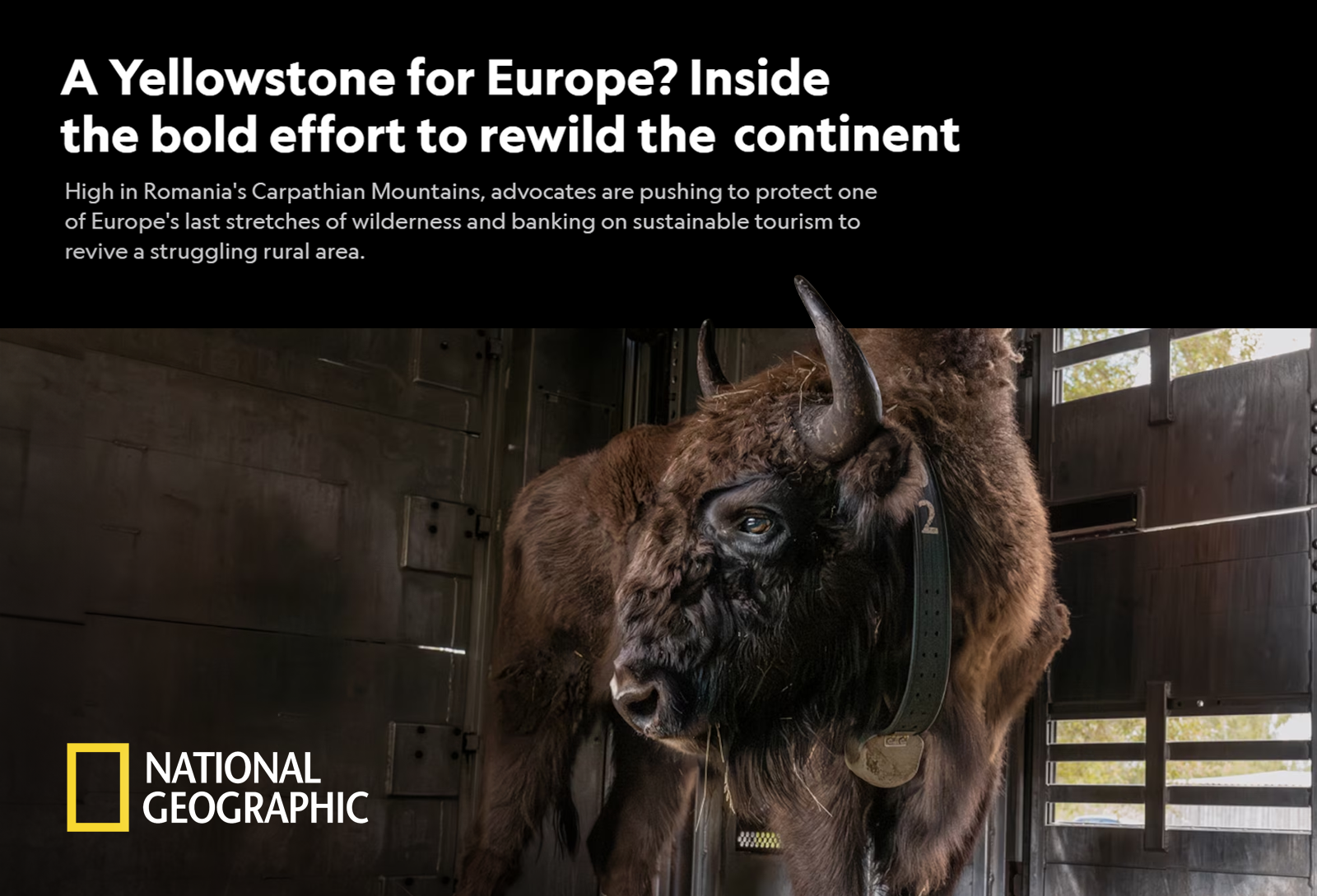The Făgăraș Mountains, one of Europe’s last remaining wilderness areas, are the focus of a recent article in National Geographic, one of the world’s most renowned science and environmental publications. British journalist Isabella Tree, best known for her bestselling book on conservation, explores the unique beauty of these mountains and the challenges faced by local communities as they navigate rapid socio-economic changes. Accompanied by stunning photographs from Dutch photojournalist Jasper Doest, the article highlights not only the spectacular landscapes but also how establishing a national park could offer sustainable solutions for local communities facing significant economic difficulties. Read the full report here.
The article is also featured in the print edition of National Geographic Magazine, which boasts a circulation of 1.5 million, and on NatGeo.com, a platform reaching 27 million readers monthly.
An irreplaceable ecosystem in Europe
The Făgăraș Mountains are considered by experts to be among the most important wild ecosystems in Europe, home to a rich diversity of rare species, including brown bears, wolves, and protected birds and plants. The article underscores the urgency of conserving this unique natural landscape and the opportunities a national park could provide for the surrounding communities.
Isabella Tree, who has documented conservation efforts worldwide, acknowledges the exceptional importance of the Făgăraș Mountains not only for Romania but for all of Europe. With her engaging narrative style, she sheds light on both the region’s natural beauty and the socio-economic challenges faced by its rural communities, emphasizing how a national park could bring transformative benefits.
“The Făgăraș Mountains represent one of Europe’s last chances to create a large-scale national park comparable to the world’s greatest parks. This is a place where biodiversity thrives, and preserving this unique ecosystem is vital for the future,” the article states.
Addressing challenges with sustainable solutions
The National Geographic article presents a comprehensive perspective on how protecting the Făgăraș Mountains can contribute to biodiversity conservation while also revitalising local economies. A national park could transform the region into a European hub for ecotourism and sustainable development, preserving local traditions and creating new economic opportunities.
The creation of the Făgăraș Mountains National Park, supported by Foundation Conservation Carpathia, holds the potential to reverse economic decline by fostering eco-tourism, low-impact development, and the production of traditional goods. These initiatives could generate sustainable income for local residents and create jobs related to conservation, hospitality, and artisanal crafts.
Isabella Tree emphasizes that by protecting the natural landscape and encouraging eco-friendly tourism, communities can adopt a new economic model based on the region’s unique natural assets. Rather than exploiting forest resources, a national park would safeguard local traditions while boosting the economy through job creation and international tourism. This model could position the Făgăraș Mountains as a global destination for eco-tourism while maintaining its cultural and ecological authenticity.
A sustainable future for the Făgăraș Mountains
The article also highlights that conserving this exceptional wilderness area is crucial not only for biodiversity but for the future of local communities. By establishing a national park, residents – especially younger generations – would have new opportunities to stay and contribute to the sustainable development of the region.
A study by Roland Berger, an international consultancy, estimates that protecting the area could generate over €100 million in additional revenue for the region by 2030, benefiting both environmental conservation and local economic growth.
About the Făgăraș Mountains
Often referred to as ‘Europe’s Yellowstone’, the Făgăraș Mountains are an unspoiled expanse of breathtaking biodiversity. From virgin forests to alpine peaks, the region is home to over 1,500 plant and animal species, making it a sanctuary for European wildlife and a testament to nature’s resilience.
